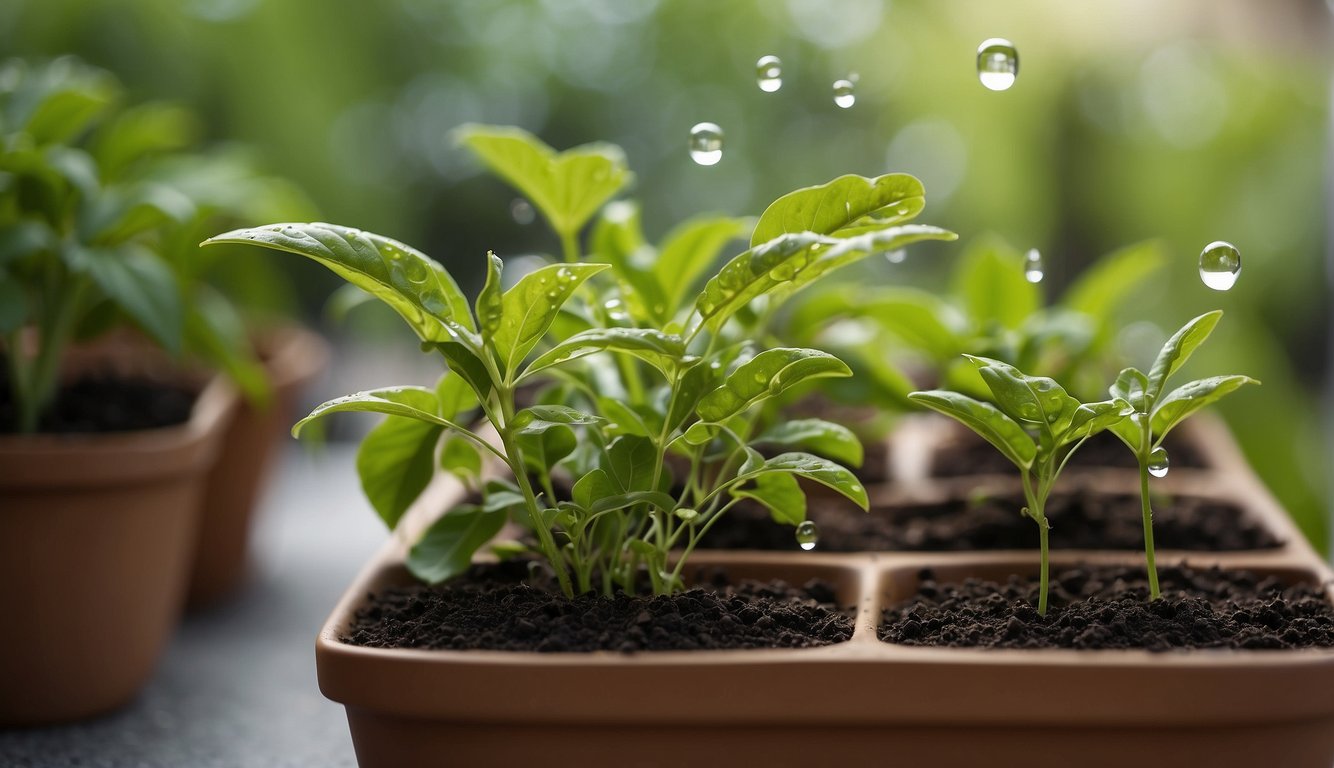TheHerbProf.com is a treasure trove of knowledge for those interested in natural healing and herbal remedies. The website is run by Paul Johnston MD. A naturopathic who has not only received extensive education in the field but also has personal experience in self-healing.
Neem oil soil drench is a natural pesticide that can be used in organic gardening. It is a powerful tool for pest control and can help keep your plants healthy. Neem oil is derived from the neem tree, which is native to India and has been used for medicinal purposes for centuries.
As a natural pesticide, neem oil is an excellent alternative to chemical pesticides, which can harm the environment and be harmful to humans and animals. Neem oil works by disrupting the life cycle of pests and can be used to treat a variety of pests, including aphids, spider mites, and whiteflies. It can also be used to treat fungal diseases, such as powdery mildew and black spot.
Using a neem oil soil drench is a simple and effective way to apply neem oil to your plants. The neem oil is mixed with water and applied to the soil around the base of the plant. The neem oil is absorbed by the roots and transported throughout the plant, providing systemic pest control. It is important to follow the instructions carefully when using neem oil, as it can be toxic to some beneficial insects, such as bees and ladybugs.
Understanding Neem Oil
Neem oil is a natural insecticide derived from the seeds of the neem tree, scientifically known as Azadirachta indica. The neem tree is native to India and has been used for medicinal and agricultural purposes for thousands of years. The oil is extracted from the seeds of the neem tree and contains a variety of active ingredients, including azadirachtin, which is the primary component responsible for its insecticidal properties.
Origin and Composition
The neem tree is a tropical evergreen tree that grows up to 50 feet tall and is found in many parts of the world, including India, Africa, and Southeast Asia. The tree produces small white flowers that give way to green fruit, which contains the seeds that are used to make neem oil.
Neem oil is composed of a mixture of compounds, including triglycerides, steroids, and terpenoids. The primary active ingredient in neem oil is azadirachtin, which is a potent insecticidal compound that disrupts the insect’s hormonal balance and prevents it from feeding and reproducing.
How Neem Oil Works
Neem oil works by disrupting the life cycle of insects and pests, making it an effective natural insecticide. When neem oil is applied to plants, it is absorbed by the plant and distributed throughout its tissues. Insects that feed on the plant will ingest the neem oil and be affected by its insecticidal properties.
Azadirachtin, the active ingredient in neem oil, works by disrupting the insect’s hormonal balance, preventing it from feeding and reproducing. This makes it an effective natural insecticide for a wide range of pests, including aphids, whiteflies, spider mites, and caterpillars.
In addition to its insecticidal properties, neem oil also has antifungal and antibacterial properties, making it a versatile tool for organic gardening and farming. It is important to note that neem oil should be used with caution and according to the manufacturer’s instructions, as it can be harmful to beneficial insects and other non-target organisms if used improperly.
Benefits of Neem Oil Soil Drench
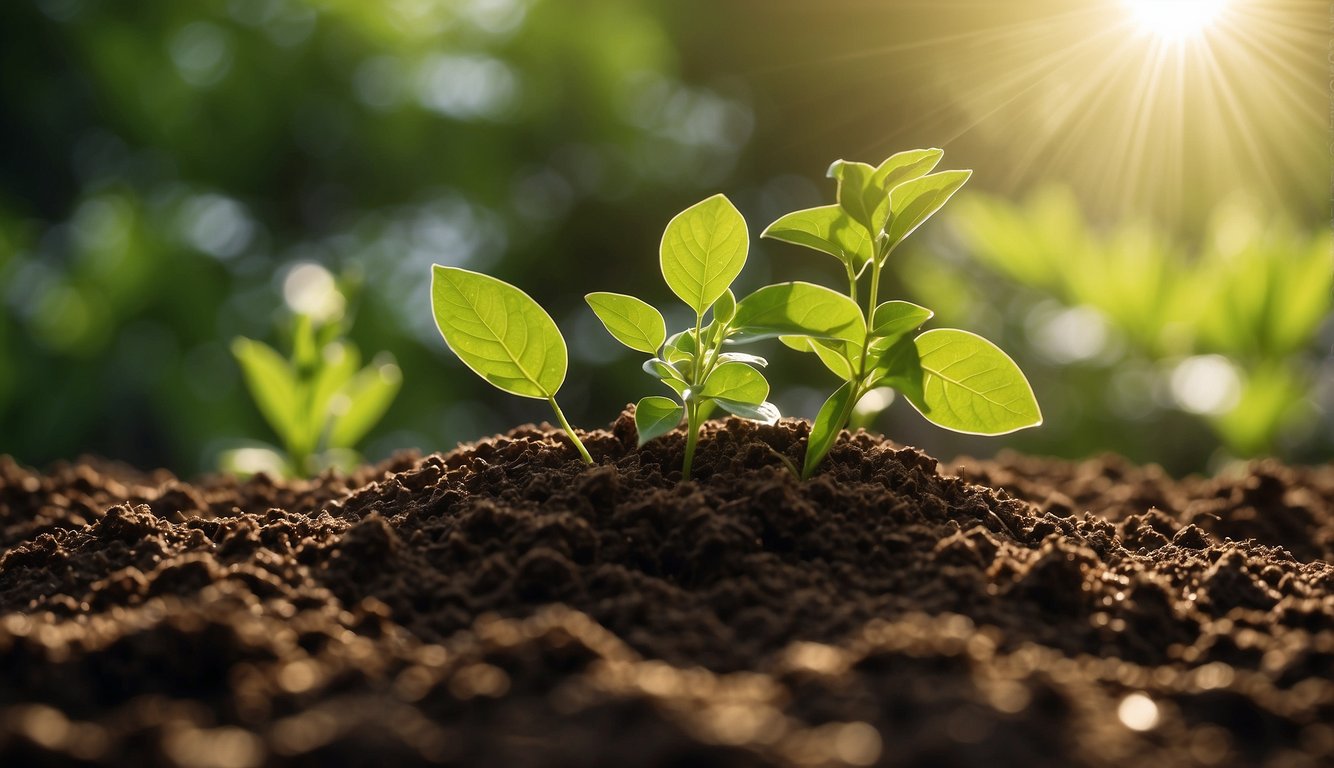
As an avid gardener, I have found that using neem oil as a soil drench has numerous benefits for my plants. Below are some of the benefits of using neem oil as a soil drench.
Pest Control Efficacy
Neem oil is an effective pesticide that can control a wide range of pests, including aphids, whiteflies, and spider mites. When used as a soil drench, neem oil is absorbed by the plant’s roots and distributed throughout the plant, making it an effective systemic pesticide. Neem oil works by disrupting the insect’s hormonal balance and preventing it from feeding and reproducing. It is also relatively safe for beneficial insects, such as bees and ladybugs, making it an ideal choice for gardeners who want to avoid harming these insects.
Fungal Disease Prevention
Neem oil also has antifungal properties that can help prevent and control fungal diseases, such as powdery mildew, black spot, and rust. When used as a soil drench, neem oil is absorbed by the plant’s roots and distributed throughout the plant, making it an effective systemic fungicide. Neem oil works by disrupting the fungal cell membrane, preventing it from growing and reproducing. It can also suppress fungal growth in the soil, preventing new infections from taking hold.
Plant Growth Enhancement
Neem oil is also a growth inhibitor, which means that it can slow down the growth of certain pests and diseases that can harm plants. However, neem oil also contains compounds that can enhance plant growth, such as azadirachtin and salannin. When used as a soil drench, neem oil can improve soil quality, increase nutrient uptake, and enhance overall plant health.
Overall, using neem oil as a soil drench can provide numerous benefits for your plants, including pest control efficacy, fungal disease prevention, and plant growth enhancement. However, it is important to use neem oil responsibly and follow the instructions carefully to avoid any negative effects on your plants.
Preparing Neem Oil Soil Drench

Neem oil is an effective organic pesticide that can be used to control soil-dwelling pests and diseases. It is also a great soil conditioner that improves soil structure, fertility, and water retention. To prepare a this oil, you will need to mix neem oil with water and an emulsifier and apply the mixture to the soil around your plants. Here are the steps to follow:
Neem Oil Concentration
The concentration of neem oil in the soil drench will depend on the severity of the infestation and the sensitivity of your plants. A concentration of 0.5% to 2% neem oil is commonly used for most pests and plants. For severe infestations, you can increase the concentration up to 5%. However, higher concentrations can burn the leaves and roots of your plants, so be cautious.
Mixing Instructions
To make a neem oil soil drench, you will need:
- Neem oil
- Water
- An emulsifier (such as soap or horticultural oil)
- A spray bottle or watering can
Here’s how to mix the ingredients:
- Measure the amount of neem oil you need based on the desired concentration and the area you want to treat. For example, if you want to treat a 10-square-foot area with a 2% concentration, you will need 0.16 fluid ounces of neem oil (10 sq ft x 0.002 oz/sq ft).
- Mix the neem oil with warm water in a container. Use a ratio of 1:10 neem oil to water (e.g., 0.16 oz neem oil to 1.6 oz water).
- Add the emulsifier to the mixture. The emulsifier helps to distribute the neem oil evenly in the water and makes it easier to apply. Use a ratio of 1:10 emulsifier to neem oil (e.g., 0.016 oz emulsifier to 0.16 oz neem oil).
- Stir the mixture well until the neem oil is fully emulsified in the water. This may take a few minutes.
- Pour the mixture into a spray bottle or watering can.
Application Tips
Here are some tips for applying this oil:
- Water the soil thoroughly before applying the drench. This will help the neem oil to penetrate the soil and reach the roots of your plants.
- Apply the drench in the evening or early morning when the temperature is cooler and the sun is not shining directly on your plants. This will prevent the neem oil from evaporating quickly and reduce the risk of leaf burn.
- Spray the drench evenly around the base of your plants, making sure to cover the soil surface. You can also use a watering can to pour the drench directly onto the soil.
- Repeat the application every 7 to 14 days or as needed until the pests are under control.
Application of Neem Oil Soil Drench

As a gardener, I have found that neem oil soil drench is an effective and natural way to control pests and diseases in plants. Here are some things to keep in mind when applying this oil.
Dosage and Frequency
The dosage of neem oil soil drench depends on the size of the plant and the severity of the infestation. A general rule of thumb is to use one ounce of neem oil for every gallon of water. For smaller plants, use a half-ounce of neem oil per gallon of water. It is recommended to apply the neem oil soil drench every two weeks to ensure the pests are controlled.
Targeted Plants and Pests
Neem oil soil drench is effective against a wide range of pests and diseases, including aphids, whiteflies, spider mites, and scale insects. It is also effective against fungal diseases such as powdery mildew and black spot. Neem oil soil drench can be used on a variety of plants, including vegetables, fruit trees, and ornamental plants.
Safety Measures
While neem oil is considered safe for humans and pets, it is important to take safety measures when applying neem oil soil drench. Wear gloves and protective clothing to avoid skin contact with the oil. It is also important to avoid inhaling the oil as it can cause respiratory problems. Neem oil should be stored in a cool, dry place away from direct sunlight.
Neem oil soil drench is an effective and natural way to control pests and diseases in plants. By following the dosage and frequency guidelines, targeting the right plants and pests, and taking safety measures, gardeners can successfully use this oil to keep their plants healthy and thriving.
Common Pests and Diseases
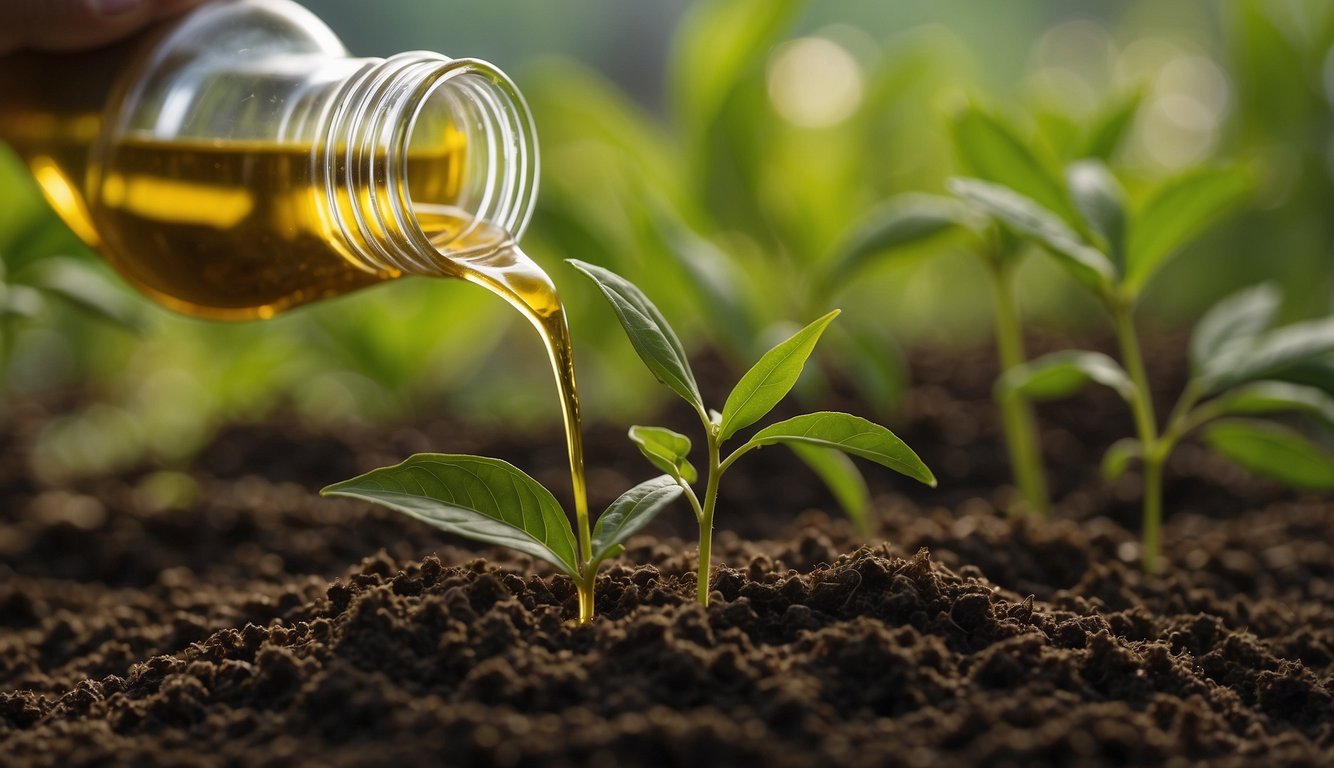
As a gardener, I know how frustrating it can be to deal with pests and diseases in the garden. Fortunately, neem oil soil drench is an effective solution for many common problems. In this section, I will discuss some of the most common pests and diseases that neem oil can help to control.
Insect Pests
Aphids, mealybugs, and mites are some of the most common insect pests that can damage plants in the garden. These pests suck sap from the leaves and stems of plants, causing them to wilt and die. Neem oil can be an effective treatment for these pests. It works by disrupting the insect’s hormonal balance and preventing it from reproducing. This can help to reduce the population of pests in your garden and prevent further damage to your plants.
Fungal and Bacterial Diseases
Powdery mildew and black spot are two common fungal diseases that can affect plants in the garden. These diseases can cause leaves to turn yellow and fall off, and can eventually kill the plant if left untreated. Neem oil can be effective at preventing and treating these diseases. It works by inhibiting the growth of the fungus and preventing it from spreading to other parts of the plant.
In addition to fungal diseases, bacterial diseases can also be a problem in the garden. Bacterial leaf spot is a common disease that can affect many types of plants, including tomatoes and peppers. Neem oil can be effective at preventing and treating this disease. It works by boosting the plant’s immune system and helping it to fight off the bacteria.
Overall, neem oil soil drench is a powerful tool for controlling pests and diseases in the garden. By using it regularly, you can help to keep your plants healthy and strong, and ensure a bountiful harvest.
Neem Oil Soil Drench in Organic Gardening
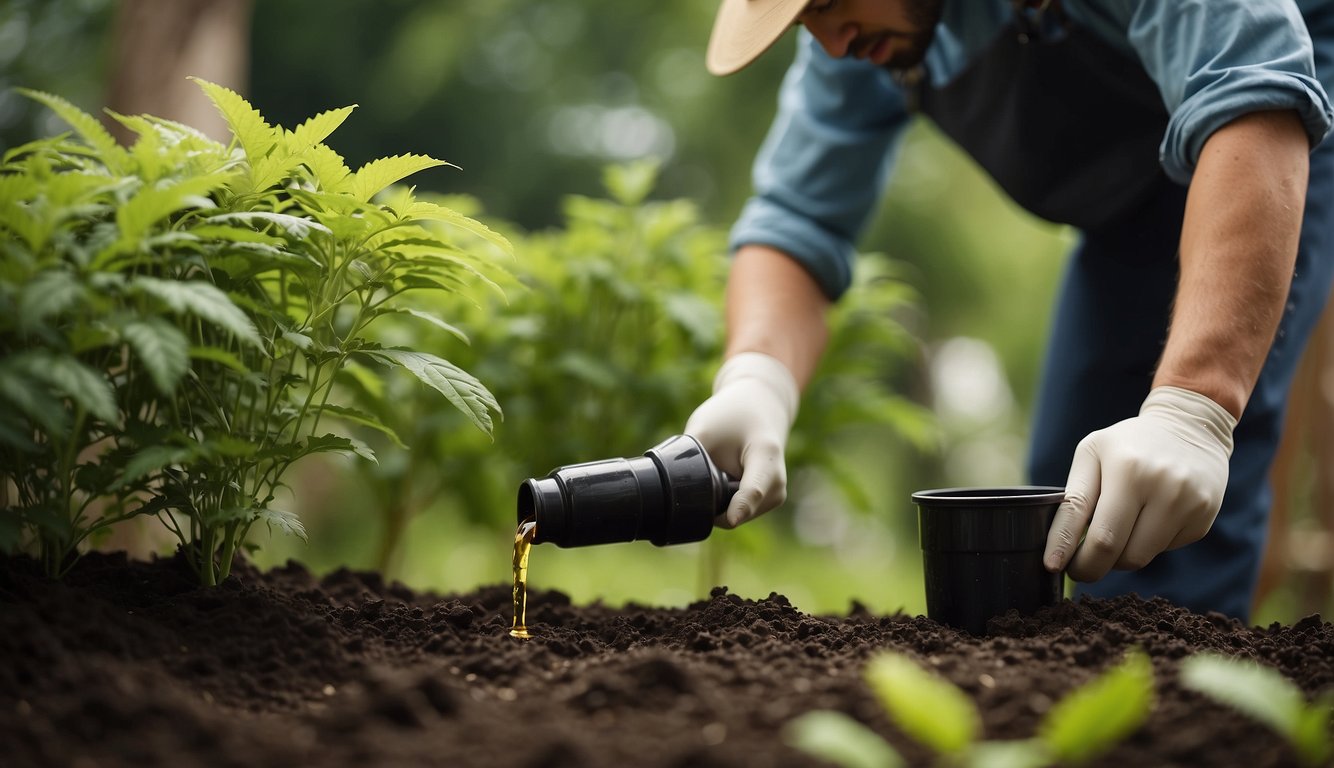
As an organic gardener, I am always looking for safe and effective ways to control pests and improve soil quality. One method that I have found to be particularly useful is neem oil soil drench.
Enhancing Soil Quality
Neem oil soil drench can be a great way to improve the quality of your soil. Neem seed meal, which is made from the residue left after oil extraction, is an excellent fertilizer. It is high in nitrogen, phosphorus, and potassium, as well as other micronutrients that plants need to thrive. When used in a soil drench, it can help to improve soil structure, increase water retention, and promote healthy root growth.
Supporting Beneficial Fauna
Another benefit of neem oil soil drench is that it is non-toxic to earthworms and other beneficial soil organisms. Unlike synthetic pesticides, which can harm or kill these important creatures, neem oil is safe to use around them. In fact, neem oil has been shown to have some insecticidal properties, but it only affects pests and does not harm beneficial insects like ladybugs or bees.
Overall, this oil is a great tool for any organic gardener. It can help to improve soil quality, support beneficial fauna, and control pests in a safe and non-toxic way. If you are looking for a natural and effective way to keep your garden healthy, I highly recommend giving neem oil soil drench a try.
Additional Uses of Neem Oil in Gardening
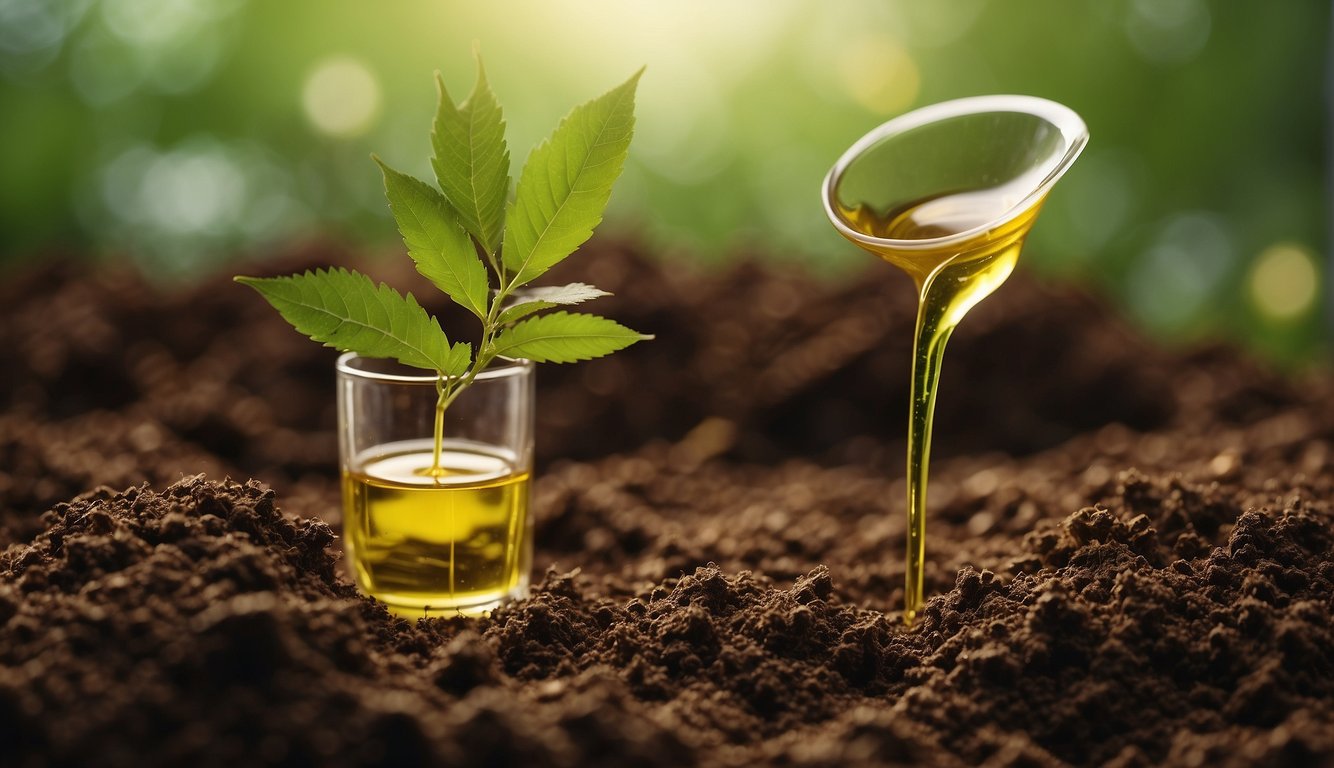
As a gardener, I have found that neem oil is a versatile and effective tool for pest control and plant health. In addition to using it as a soil drench, there are other ways to incorporate neem oil into your gardening routine.
Foliar Spray Application
Neem oil can be used as a foliar spray to control pests and diseases on plants. Dilute the neem oil according to the instructions on the bottle and spray it on the leaves of your plants. This method is particularly effective for controlling aphids, whiteflies, and spider mites.
It is important to note that neem oil should not be sprayed in direct sunlight or on hot days, as it can cause leaf burn. It is best to spray in the early morning or late afternoon when the sun is not as intense.
Neem Oil as a Systemic Solution
Neem oil can also be used as a systemic pesticide, which means that it is absorbed by the plant and distributed throughout the entire system. This makes it effective against pests that are difficult to control with foliar sprays, such as scale insects and mealybugs.
To use neem oil as a systemic solution, mix it with water and apply it to the soil around the base of the plant. The neem oil will be taken up by the roots and distributed throughout the plant. This method is particularly effective for indoor plants and ornamental plants.
Neem oil is a versatile and effective tool for pest control and plant health. By incorporating it into your gardening routine, you can keep your plants healthy and pest-free.
Nature’s Nectar: Neem Oil Soil Drench
Today, we’re diving into the earthy world of neem oil soil drench!
Now, neem oil is a natural powerhouse. It’s packed with pesticidal properties that can help keep your plants pest-free. But did you know it can also be used as a soil drench? That’s right, folks!
You see, a neem oil soil drench can help tackle soil-borne pests and diseases. It’s like giving your soil a health boost!
But here’s the kicker. Neem oil is non-toxic to beneficial insects like bees and ladybugs. So, you can keep pests at bay without harming your garden’s helpers!
So, if you’re ready to give neem oil soil drench a try, head over to theherbprof.com. It’s your go-to guide for all things green!
Remember, folks, gardening is not just about growing plants. It’s about growing a healthier, happier environment. So, let’s keep digging, keep learning, and keep laughing. Happy gardening!
References – Neem Oil Soil Drench
Little Herb Encyclopedia, by Jack Ritchason; N.D., Woodland Publishing Incorporated, 1995
The Ultimate Healing System, Course Manual, Copyright 1985, Don Lepore
Planetary Herbology, Michael Tierra, C.A., N.D., Lotus Press, 1988
Handbook of Medicinal Herbs, by James A. Duke, Pub. CRP Second Edition 2007
The Complete Medicinal Herbal, by Penelope Ody, Published by Dorling Kindersley
Check the Following Articles!
Satin Pothos Pest: Identify & Control Common Infestations
What to Fertilize Pumpkins With? Tips & Recommendations
Flies in Compost Bin: What Can You Do About It?
Frequently Asked Questions – Neem Oil Soil Drench
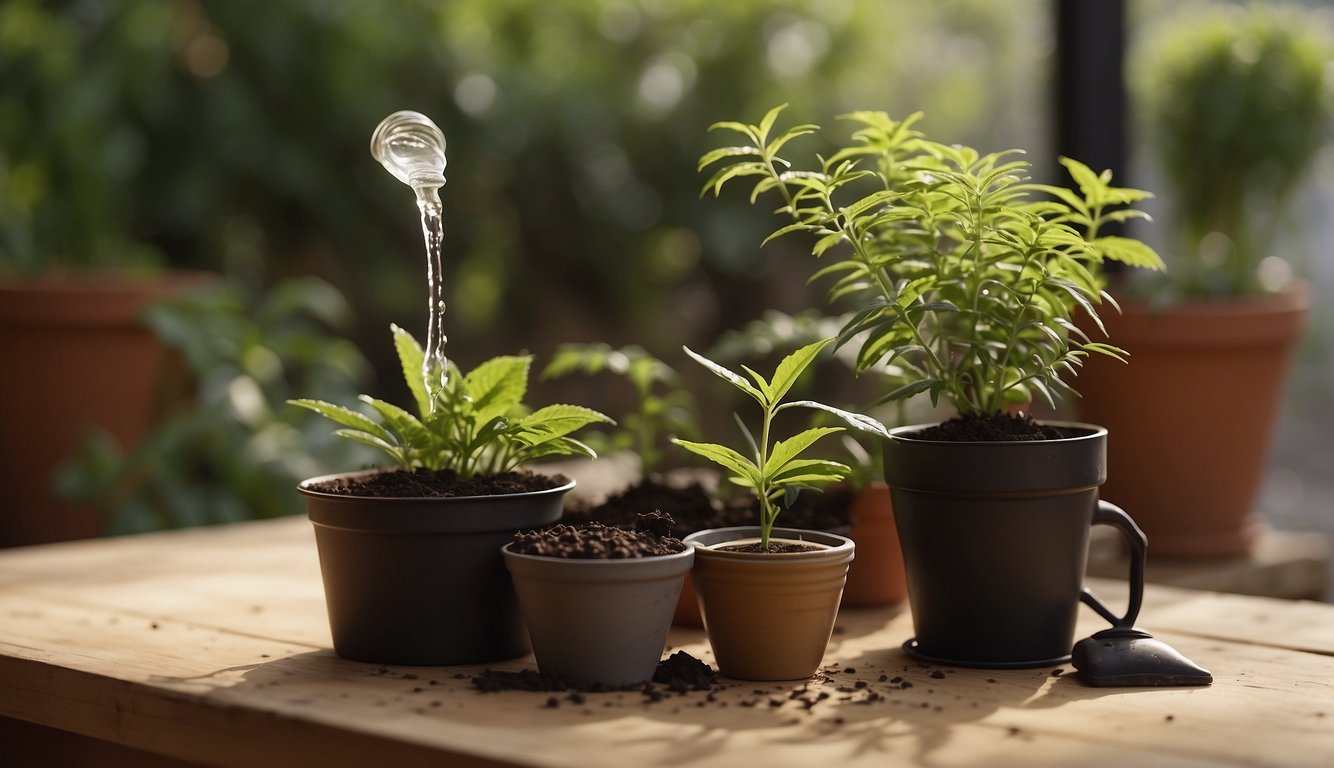
Is neem oil soil drench safe for use around humans and pets?
Yes, neem oil soil drench is considered safe for use around humans and pets. However, it is important to follow the instructions on the product label and avoid direct contact with the oil. It is also recommended to keep pets and children away from treated areas until the soil has dried.
What are the benefits of using neem oil as a soil drench for plants?
Neem oil soil drench can benefit plants in several ways. It can help control soil-dwelling insects and pests such as fungus gnats, thrips, and root aphids. It can also help prevent and control fungal diseases such as powdery mildew and black spot. Additionally, neem oil can improve soil health by increasing microbial activity and nutrient availability.
What is the correct method to apply a neem oil soil drench?
To apply a neem oil soil drench, mix the oil with water according to the product label instructions. Then, pour the mixture directly onto the soil around the base of the plant. It is important to avoid getting the oil on the plant’s leaves or stem. Repeat the application every 7-14 days as needed.
Can neem oil soil drench effectively control fungus gnats and thrips?
Yes, neem oil soil drench can effectively control fungus gnats and thrips. The oil works by disrupting the insect’s life cycle and preventing them from reproducing. It also acts as a growth inhibitor and appetite suppressant, causing the insects to die slowly over time.
How can overuse of neem oil in soil affect plant health?
Overuse of neem oil in soil can have negative effects on plant health. It can lead to a buildup of the oil in the soil, which can harm beneficial soil microorganisms and reduce nutrient availability. Additionally, overuse can cause phytotoxicity, which can result in leaf burn, stunted growth, and other plant health issues.
What is the duration of effectiveness for a neem oil soil drench?
The duration of effectiveness for a neem oil soil drench can vary depending on factors such as the severity of the pest infestation and the frequency of application. In general, neem oil can provide protection for up to 7-14 days after application. It is important to monitor the plants for signs of pests or disease and reapply the drench as needed.
